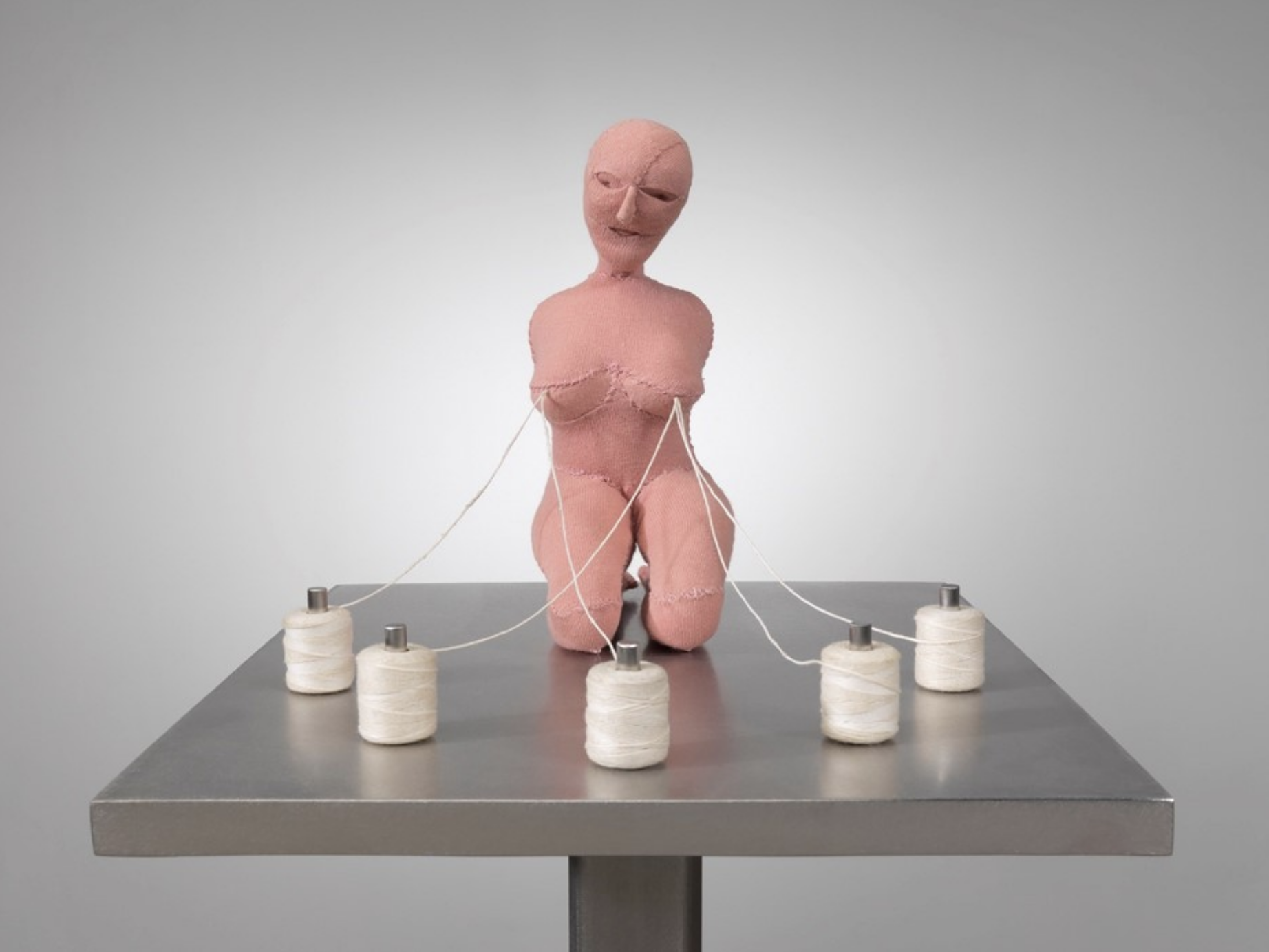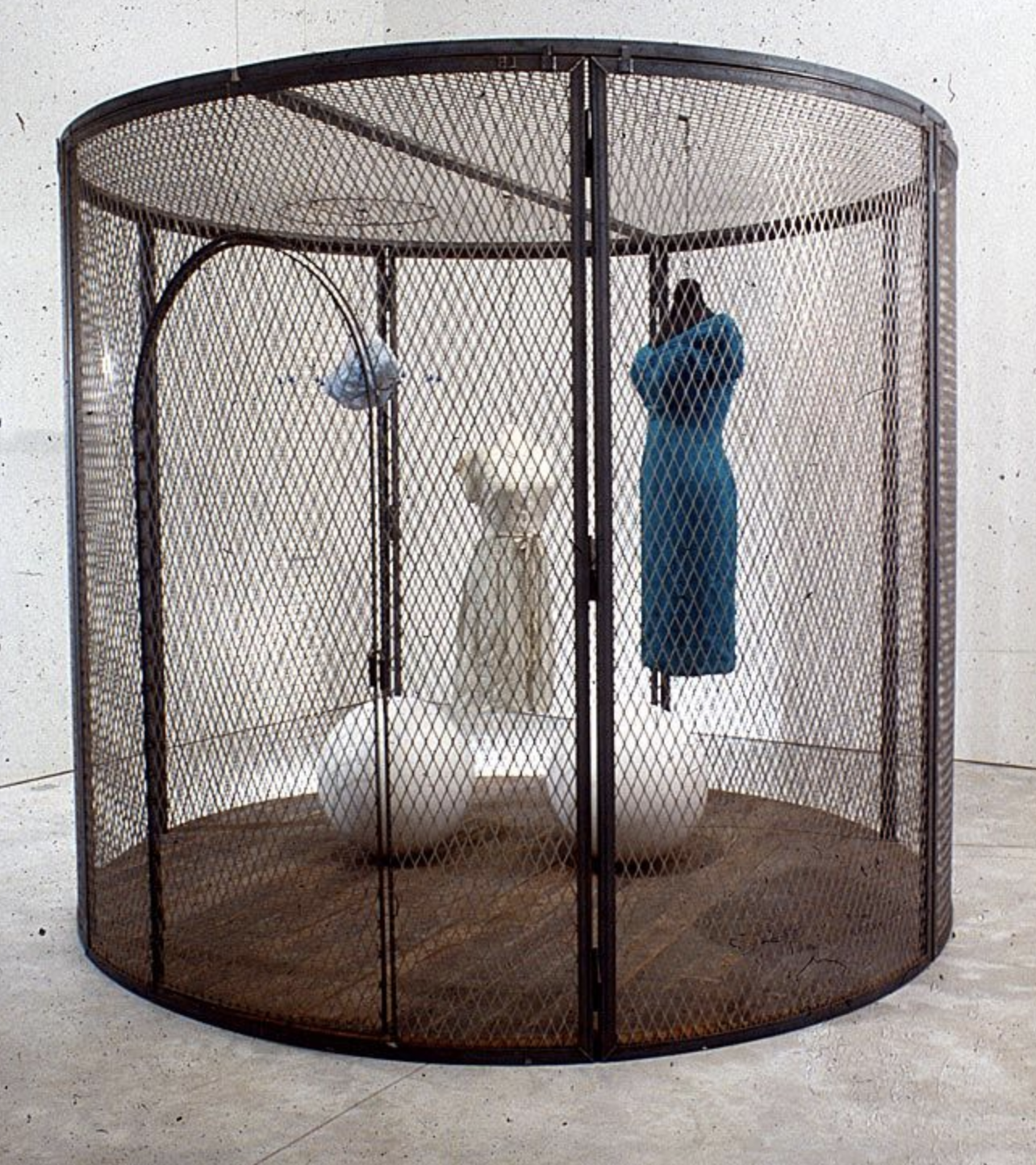The Fertile Metaphor: Louise Bourgeois and ‘The Woven Child’
Louise Bourgeois: The Good Mother (detail), 2003 © The Easton Foundation/VAGA at ARS, NY and DACS, London 2021. Photography by Christopher Burke
'I always had the fear of being separated and abandoned. The sewing is my attempt to keep things together and make things whole.'
Louise Bourgeois
I recently attended a fine exhibition of the fabric art of Louise Bourgeois. (‘The Woven Child’ is at the Hayward Gallery, London until 15 May.)
The show collects the textile-based work Bourgeois created in the last two decades of her life: a multiplicity of sculptures, installations, collages and embroidery that revisit the traumas of her childhood and her complex feelings about her family. It is all the more powerful given the age of the artist and the distinctiveness of her chosen media.
‘My subject is the rawness of the emotions, the devastating effect of the emotions you go though.’
Bourgeois, born in 1911, grew up in the Parisian suburb of Choisy-le Roi, where her parents ran a workshop that repaired antique tapestries.
‘My mother would sit out in the sun and repair a tapestry or a petit point. She really loved it. This sense of reparation is very deep within me.’
Louise Bourgeois: Cell XXV (The View of the World of the Jealous Wife), 2001
In her eighties and living in New York (which had been her home since 1938), Bourgeois took her mother’s old clothes and some of her own, and redeployed them in her art. Delicate white camisoles, underwear and nightgowns; a pale pink blouse, a red apron and a little black dress were suspended from hangers, hooks and bones, in oppressive constructed rooms and cages, accompanied by two large white marble spheres, a small model of her childhood home and lurking spiders.
‘You can retell your life and remember your life by the shape, weight, the color, the smell of the clothes in your closet.’
These are rather disturbing domestic pieces - claustrophobic, soaked in secrets and lies; memory and loss. Bourgeois was haunted by her childhood: by her father’s brazen infidelities with a string of women, including her governess; by her sick mother’s quiet acceptance; by her own sense of impotence and confinement.
‘Sewing implies repairing. There is a hole…you have to hide the damage…you have to hide the urge to do damage. There is a background of drama here… that something bad you must have done must be undone. I sew… I do what I can.’
Bourgeois repeatedly returned to the metaphor of fabric and weaving. Throughout her work she included scissors, bobbins, threads and needles; scraps of fading tapestry. Sewing implies mending. Seams are like scars. Clothes suggest second skins. Stuffed fabric prompts associations with soft flesh and fragile emotions.
‘The needle is used to repair the damage. It’s a claim to forgiveness. It’s never aggressive, it’s not a pin.’
And though her spiders seem at first sinister and threatening, for Bourgeois they represented creation, restoration and motherhood.
'The spider is a repairer. If you bash the web of a spider, she doesn’t get mad. She weaves and repairs it.’
Bourgeois made stuffed heads covered in bright, colourful material: wincing, screaming, kissing; sometimes seeming masked and gagged. The pained head of her brother Pierre, who was institutionalized with mental illness, is loosely stitched - as if to suggest he is coming apart at the seams.
‘I had a flashback of something that never existed.’
Louise Bourgeois: Pierre
There are twisted torsos hanging limp, copulating couples, body parts sagging with age. There are embroideries of flowers and clocks, collages of abstract patterns and spider’s webs. Bourgeois arranged cushion-like shapes in neat columns, perhaps trying to impose order on a chaotic world.
‘It is a world that is not going to disappoint me because I am building it myself. I am the author of my own world with its internal logic and with its value that no one can deny.’
What particularly struck me about the exhibition was that Bourgeois had been inspired to such variety of thought and depth of feeling by one broad theme. Weaving is a fertile metaphor.
This may resonate with those of us working in the fields of commercial creativity. When we invent brand worlds and campaign ideas, we should fully explore the opportunity for texture and nuance. A well-chosen metaphor contains layers of meaning. It suggests a diversity of interpretations. It offers rich rewards.
Louise Bourgeois
‘My childhood has never lost its magic, it has never lost its mystery and it has never lost its drama. I refuse to let go of that period because, painful as it was, it was life itself.’
In the late 1930s Bourgeois ran her own gallery in Paris. In 1945 she had her first solo show. In the 1950s she exhibited with the Abstract Expressionists in New York. And yet she was marginalised by the art establishment. Only gradually through the 1970s did she receive recognition, and only in 1982 was she given her first retrospective - at the Museum of Modern Art in New York.
'You learn for yourself, not for others, not to show off, not to put the other one down. Learning is your secret, it is all you have, it is the only thing you can call your own. Nobody can take it away.'
Bourgeois died in 2010, aged 98. She finished her last pieces the week before. Although her work had explored pain, anxiety and loss, she consistently returned to a message of repair and restoration. We all deserve a second chance.
‘The repair of a tapestry or a costume is precisely a plea in favor of a second chance, it is a plea in favor of x and against y.’
'Back through the years
I go wonderin' once again
Back to the seasons of my youth.
I recall a box of rags that someone gave us,
And how my momma put the rags to use.
There were rags of many colors,
Every piece was small.
And I didn't have a coat,
And it was way down in the fall.
Momma sewed the rags together,
Sewin' every piece with love.
She made my coat of many colors
That I was so proud of.’
Dolly Parton, ‘Coat of Many Colors'
No. 367



